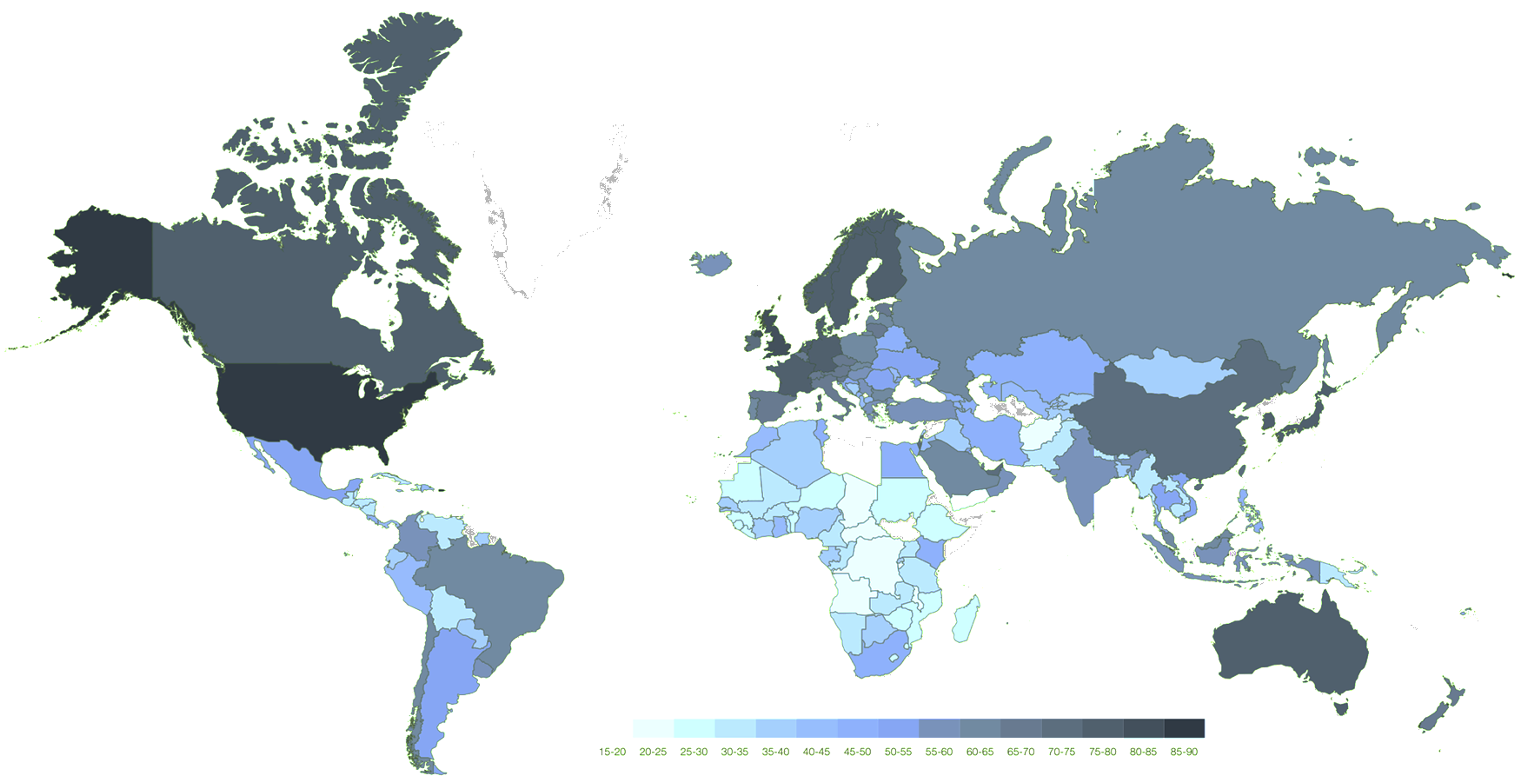Artificial Intelligence (AI) Technologies

The intensive development and spread of digital technologies in recent decades have significantly changed the landscape of public policy. The focal areas of technological development include artificial intelligence (AI), robotics, blockchain, virtual and augmented reality technologies.
The COVID-19 pandemic facilitated the development of AI technology. Given the extensive pressure in national health systems and severe epidemiological restrictions, AI has been actively used and continues to be used to diagnose diseases, as well as to predict the course of the disease and further spread of the virus. The Stanford Institute for Human-Centered Artificial Intelligence estimates that private investment in AI doubled in 2021 to $93.5 billion. The International Data Corporation (IDC), in turn, forecasts that global spending on the artificial intelligence systems development will rise to $204 billion in the United States by 2025.
The widespread adoption of AI technologies will lead to a 14% increase in global GDP ($15.7 trillion) in 2030, according to the PricewaterhouseCoopers (PwC) The macroeconomic impact of artificial intelligence report. McKinsey experts expect that by 2030, about 70% of companies will use at least one type of AI technology, which will add $13 trillion to the global economy and ensure the increase in global GDP by 1.2% per year.
Government AI Readiness

Source: Oxford Insights' Government AI Readiness Index 2021
With the positive dynamics of public investment in IT, it is artificial intelligence that is increasingly investing. In 2021, federal funding for AI research in the United States increased by 50% compared to 2020 and reached $6 billion.[1] AI technologies provide unique opportunities to improve the performance of public administration, reducing costs and ensuring high accuracy in predicting management decisions. A study by Deloitte shows that automating workflows with AI will save up to 30% of government employees' time.
According[2] to the OECD, more than 60 countries have developed strategies for the artificial intelligence development. National road maps differ in terms of goals, timelines, implementation mechanisms, sectoral focus, budgets, and the nature of government involvement. Among the 230 AI projects initiated by public institutions in the EU Member States, 7 relate to education, 4 relate to culture, 41 relate to health, 14 relate ro housing and communal services, 3 relate to environmental protection, 40 relate to economy, 27 relate to public order, 4 relate to defence, 16 relate to in social services, and 76 relate to public services.
[1]In 2021, the "Artificial Intelligence" Federal Project was launched in Russia. It is planned to invest 24.6 billion rubles in AI within 5 years. For 2021, a budget of 4.7 billion rubles was approved, and 99% of it was executed.
[2]As of April 2020
Related Cases
Since October 14, 2020, visitors to the "lv" Latvian public services portal are assisted by a "virtual assistant" Eric. The digital assistant algorithms are based on the log of answers to the questions most frequently asked by citizens.
- In 2020, a “virtual doctor” was developed in Croatia which can process 50,000 requests per day.
- InferRead™ CT Lung is a software based on AI developed with the support of the European Union for analyzing the results of computed tomography and early diagnosis of coronavirus infection.
- With support from the World Bank, Brazil has launched a smart public procurement appraisal system in 12 federal states. AI analyzes 27 datasets (250 million data points), including 15 million electronic accounts worth more than $100 billion, information about 750,000 companies, and 30,000 news feeds. During its operation, the system identified 500 firms owned by civil servants; more than 420 firms won tenders from coverup companies.
- The Academy of Sciences of China together with the internal audit bodies of the Communist Party have developed a Zero Trust software solution to assess information on income, expenses, and liabilities of civil servants. It is known that Zero Trust revealed violations in the declarations of 8,721 civil servants.
- In 2017, the Department of Transport in London launched an AI-based application that provides up-to-date information on bus routes, nearest bus stops, arrival times, and metro congestion.
- The Hangzhou transport system is regulated using AI and big data analysis technology. The traffic management system recognizes traffic accidents, slows down traffic, and sends dispatch commands to the appropriate services.
AI technologies – SAI Case Studies
Office of the Auditor General of Norway

SAI: Office of the Auditor General of Norway
Title: Auditing machine learning algorithms: A white paper for public auditors
Date: October 14, 2020
Link: Proceed
The active introduction of artificial intelligence (AI) and machine learning technologies in public sector requires new approaches to conducting external public audit. The SAIs of Brazil, Finland, the UK, Germany, the Netherlands, Norway and Finland prepared an expert report with an overview of the key risks of using AI and machine learning technologies in public administration and proposals for conducting an audit as part of the activities of SAIs. The existing risks are grouped into 4 main clusters:
- Optimization of AI algorithms and machine learning often does not take into account the requirements of compliance with the law, transparency and accountability of public administration;
- Problems of interaction between the customer and the contractor, as a result of which a technical solution based on machine learning technologies leads to the complication of public administration processes;
- Lack of competencies for the use and development of products and solutions based on machine learning technologies within the organization;
- The problem of regulating the use of personal data when training models and neural networks (there are no relevant guidelines issued by the relevant departments responsible for maintaining the security of personal data).
Government Accountability Office of the United States, GAO U.S.

SAI: Government Accountability Office of the United States, GAO U.S.
Title: Artificial Intelligence: An Accountability Framework for Federal Agencies and Other Entities
Date: June 30, 2021
Link: Proceed
In order to increase accountability and responsibility in the use of artificial intelligence (AI) systems in government programs, as well as the public authorities performance, in 2021, the SAI of the USA developed a guide to the reporting system for the use of AI. The manual is based on 4 complementary principles, including governance (use, control and reporting as part of the implementation of AI in public administration systems), data usage (use of qualitative data obtained from reliable sources, as well as their correct processing and analysis), monitoring (ensuring the reliability and relevance of AI systems), and performance (the result of the use of AI systems must correspond to the goals and objectives of government programs and projects).
Government Accountability Office of the United States, GAO U.S.

SAI: Government Accountability Office of the United States, GAO U.S.
Title: Technology Assessment: Artificial Intelligence: Emerging Opportunities, Challenges, and Implications
Date: March 28, 2018
Link: Proceed
To assess the impact, as well as the challenges that the widespread adoption of artificial intelligence (AI) technologies could lead to, GAO held an expert forum event. Among the key areas that participants drew attention to were cybersecurity, autonomous cars, justice and financial services. Experts note that although the benefits of AI development in most areas are obvious, the active introduction of technology into everyday life faces a number of serious challenges. Among the main challenges are the lack of data for training neural networks, lack of employee competencies, and ethical risks.


